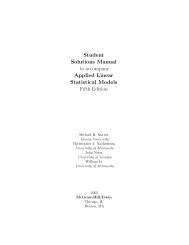Journal of Film Preservation - FIAF
Journal of Film Preservation - FIAF
Journal of Film Preservation - FIAF
You also want an ePaper? Increase the reach of your titles
YUMPU automatically turns print PDFs into web optimized ePapers that Google loves.
Four City <strong>Film</strong>s<br />
Donald McWilliams<br />
Historical Column<br />
Chronique historique<br />
Columna histórica<br />
We carry our human ghosts around with us.<br />
As we grow we face the mirrors, and see<br />
The spectre <strong>of</strong> a great-aunt, a vague look<br />
Known only from sepia snapshots. The hands we’re used to –<br />
Yes, these – their contours came by way <strong>of</strong> a long retinue<br />
Of dust. We are phot<strong>of</strong>its <strong>of</strong> the past,<br />
And the future eyes us evasively as we eye ourselves.<br />
We are the ghosts <strong>of</strong> great-aunts and grand-nephews.<br />
Le “city film”, un presque genre, a encore<br />
de beaux jours devant lui, si l’on en<br />
croit le texte que le cinéaste Donald<br />
McWilliams consacre à quatre films<br />
récents se réclamant de cette étiquette.<br />
Mais si Berlin, symphonie d’une grande<br />
ville (1927) de Ruttman, considéré, sans<br />
doute à tort, comme le premier film du<br />
genre, fait le portrait d’une ville telle<br />
qu’elle était au moment où le film fut<br />
tourné, les films dont il est ici question<br />
font le portrait aujourd’hui d’une ville<br />
telle qu’elle fut autrefois.<br />
Faisant lui-même fréquemment usage<br />
d’archives dans ses films, l’auteur<br />
examine les œuvres en question avec<br />
un œil intéressé autant que critique.<br />
Et il définit ainsi le défi qu’affronte<br />
le cinéaste : dépasser la surface des<br />
choses pour nous faire comprendre la<br />
réalité qui se cache dans ces images<br />
d’une autre époque.<br />
Les trois premiers films dont nous parle<br />
McWilliams utilisent le cinéma en tant<br />
qu’histoire, non pas, comme le fait<br />
couramment la télévision, pour illustrer<br />
l’histoire. Qui plus est, ces trois films,<br />
exploration éminemment personnelle<br />
de l’histoire, sont l’œuvre de cinéastes<br />
sensibles et talentueux.<br />
La Mémoire des anges (Luc Bourdon,<br />
Québec 2008) a été bâti à partir de<br />
120 films (plus du matériel d’archives)<br />
produits par l’Office national du film<br />
du Canada dans les années 50 et 60.<br />
Savamment montés (avec alternance<br />
presque imperceptible du noir et blanc<br />
et de la couleur), sans commentaire,<br />
mais utilisant la bande sonore originale,<br />
ces films constituent un récit, à savoir :<br />
20 ans de la vie de Montréal. La<br />
musique, notamment les chansons,<br />
We are the ghosts <strong>of</strong> what is dead and not yet born.<br />
From Seven Types <strong>of</strong> Shadow - Seven poems by U.A. Fanthorpe<br />
Ruttmann’s Berlin: Symphony <strong>of</strong> a City (1927) is the most celebrated <strong>of</strong> the<br />
genre “the city film”, although it is far from being the first. Recently, part <strong>of</strong> a<br />
45-minute film, Living London (1904), has been found. In the past year, three<br />
new city films have been released on DVD, and a fourth release features one<br />
that has long been unavailable. The first three are La Mémoire des anges, on<br />
Montréal, Of Time and the City, on Liverpool, and Helsinki Forever; and the<br />
fourth, The London Nobody Knows. The first three films share one important<br />
difference from those early city films. They were films made then on the city<br />
as it was then. These new films are films made now on the city as it was then<br />
– reflections by 21st-century filmmakers. Perhaps one impulse for these<br />
films is the greater accessibility <strong>of</strong> archives in recent years. That has been<br />
engendered in part by digital developments and the possibility <strong>of</strong> restoring<br />
and presenting old footage in greater fidelity.<br />
I use a lot <strong>of</strong> archival material in my own films, and I do it nervously. I<br />
wonder if there is a certain “easiness” in the use <strong>of</strong> archives. Susan Sontag<br />
once wrote that “aesthetic distance seems built into the very experience <strong>of</strong><br />
looking at photographs, if not right away, then certainly with the passage<br />
<strong>of</strong> time. Time eventually positions most photographs, even the most<br />
amateurish, at the level <strong>of</strong> art.” I think this also applies to old film footage.<br />
Removed from its context by many years, it becomes something else. In<br />
addition, one is <strong>of</strong>ten seized with an inexplicable nostalgia in the face <strong>of</strong><br />
footage and images from the past; and then, there is the feeling, as Johan<br />
van der Keuken pointed out, that although these events were recorded in<br />
the past, the movement brings these events and people into the present –<br />
and so are happening now.<br />
There is therefore the challenge to the filmmaker to get below the surface<br />
and give us insights into the events within that old footage. He must give<br />
us a reason for watching the footage that is not simply nostalgic (although<br />
that is not to be sneezed at!). What I see in these three films is something<br />
important. <strong>Film</strong> being used as history, not film being used to illustrate<br />
history as one might get from a conventional TV documentary. And this<br />
57 <strong>Journal</strong> <strong>of</strong> <strong>Film</strong> <strong>Preservation</strong> / 81 / 2009
















